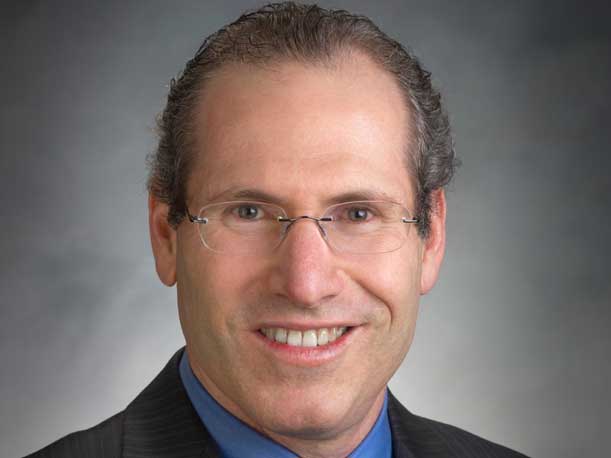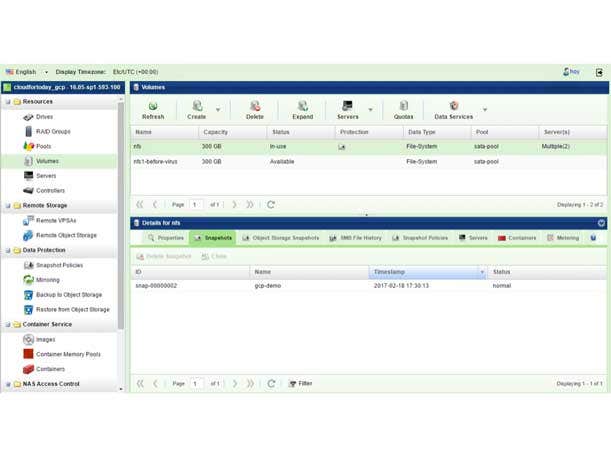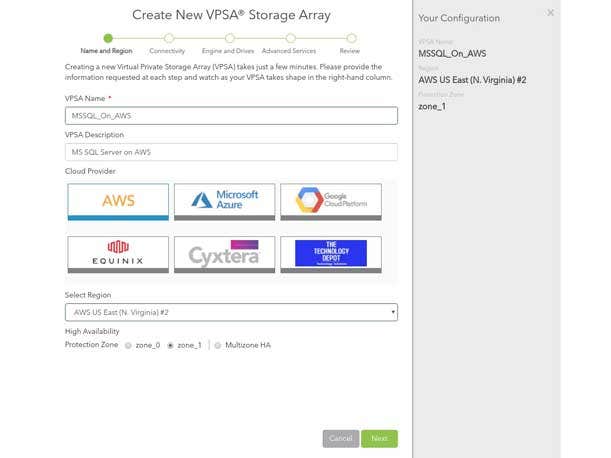Edge Cloud Firm Zadara Aims For Profit After CEO Switch
‘Reaching profitability is not the right goal if you’re not growing at this same time. So yes, we have mutual goals that require compromise in some way. But we have two goals, one of which is to reach profitability, to stay profitable, but also to keep growing. Maybe not a huge amount of growth, because you cannot do it while keeping profitable, but still growing fast,’ says Yoram Novick, Zadara CEO.

On The ‘Edge’ Of Profitability
Zadara, which develops end-to-end infrastructure to automate the provisioning of compute, storage, and network resources as part of its focus on what it calls the “edge cloud,” this month hired Yoram Novick as its new CEO. Novick is taking the reins of Irvine, Calif.-based Zadara from Nelson Nahum, the company’s co-founder. Nahum, in turn, is taking over as chief technology officer.
Novick, in a wide-ranging question-and-answer session with CRN, said Zadara, which was founded in 2011, is slated to be profitable in 2023 for the first time. The change in CEO, he said, will allow Novick to focus on ensuring the company will continue to grow even as it achieves profitability.
[Related: Storage Vendors Evolve With The Times: 2023 Storage 100]
Investing for both growth and profitability is one of Novick’s primary focuses as he puts his stamp on Zadara.
“The company is profitable from an EBITDA point of view,” he said. “And my goal is to reach profitability in 2023. I think it’s very important in these times when the time of growth at all cost, and it doesn’t matter if you lose money, is over. People are looking at businesses as things that need to be sustainable. It’s a very important milestone.”
Growth is important, and has been important at all costs for a long time because in part interest rates were so low that it made sense for investors to make growth the primary goal in IT startups, Novick said. However, he said, that is changing.
“Now everybody has realized those times are over,” he said. “Growth is important. Definitely it’s important for technology companies. But at the same time, you also need to either be profitable or at least have a credible timeline to get profitable.”
For more of CRN’s conversation with Novick about Zadara, click through the slideshow.

How do you describe Zadara?
So in one sentence, the company is an edge cloud company, and basically providing cloud services at the edge of the network edge. Now, what does this mean? I guess I don’t need to explain what cloud computing is and why it’s a good thing because everybody today seems to be in the cloud, either entirely or partially. But when people say cloud, today, the meaning is what we call centralized cloud, which means that there are a relatively small number of very large data centers that act as the cloud. And this is a very good model for a lot of use cases. And that’s the reason why cloud took off and why cloud is the dominant computing platform these days. However, a centralized cloud does not address many of the challenges. And I can explain which challenges there are, for certain use cases.
For example, if you have a use case that is latency sensitive, where you need a certain level of latency, it’s not possible to do it in a centralized environment where you’re far away from the closest centralized cloud. That’s one case. So performance could be an issue. The second case is what people call digital sovereignty. If you are in a country or in a situation where you need your data to be in the same country or the same locality, you cannot use a centralized cloud. Moreover, if you are, say, a government agency and you need to have the data on prem or in a secure location, you cannot use a centralized cloud. So for all of those use cases, the centralized cloud model is not a good solution. And that’s where Zadara comes in. The Zadara model is what we call an edge cloud. And you can call it a distributed cloud model, where you can have the cloud as close to you as you want it to be. If you are in a situation where you want the cloud to be on-prem in your own data center, Zadara can do that. Customers can basically build the cloud in their own data center. If you are a managed service provider and you want to have a cloud in your own data center to provide services for your customers, you can do that.
There are over 500 Zadara clouds across the world in every major city. And that’s what Zadara is all about.

What are some of the cloud services that Zara provides to its clients?
It’s the same services that you can get from AWS, and they’re actually compatible with AWS. So if you are an AWS customer using, say, its EC2 services, Zadara can do the same. The porting is very straightforward. If you build your environment to use, let’s say, AWS VPC (Virtual Private Cloud), EC2, and everything that AWS provides, Zadara provides the same API so you can move everything you’ve done to Zadara and it works in the same way that it works in the Amazon Cloud.
What’s the cost difference between Zadara’s edge cloud versus the centralized cloud?
It depends. But in every case, it’s a significant cost difference, especially since Zadara is a consumption-based model. All public clouds also have consumption-based models, but Zadara has a lower entry point. And even if you start to grow, overall Zadara’s cost to the end user is lower than, let’s say, any one of the three large cloud providers, Amazon, Microsoft and Google.

What were you doing prior to taking over as Zadara’s CEO?
I spent time running companies. I founded and ran several companies, for example [data migration technology developer] Topio, which was eventually sold to NetApp. I also founded and ran a company called Maxta, which is a hyperconvergence company that was eventually sold to Huayun. I’ve also been a board member and advisor to several other companies, mostly in the infrastructure space.
So where is Nelson Nahum (pictured), the former CEO of Zadara, going?
He is becoming the CTO of the company. He’s going to continue leading the technical innovation portion of the company. He is staying with the company and he will help me get on board.
So why the change at the top? Why did Nelson feel the need to step aside as CEO and bring in a new CEO?
That’s a good question. I’ve known him for at least 25 years. A long time ago, we knew each other. We started companies at the same time, then sold the companies we started, so we knew each other for some time.
When he reached out to me about three months ago, I asked the same question and he said, ‘Listen, the company is growing. We’ve got much more to do. I am doing the technical side and the business side. I want to focus on technical side, but I need somebody to take over to keep growing the company and to really move to a new chapter of company.’ So he thought that by knowing me and what I’ve done that I’m the right guy to take over and help the company to its new chapter, while he continues to be a very important member of the company. We work well together. We have good synergy between us as we continue working together.

What are some things that you as CEO see as your strategic imperatives for 2023?
I have several goals for Zadara. First of all, because of the special times we are in, my goal is to reach profitability for the company. From a financial point of view, we reached an EBITDA-positive state last year. So the company is profitable from an EBITDA point of view. And my goal is to reach profitability in 2023. I think it’s very important in these times when the time of growth at all cost, and it doesn’t matter if you lose money, is over. People are looking at businesses as things that need to be sustainable. It’s a very important milestone.
The second goal is to create more awareness for Zadara in general. And for the edge cloud, we have a great solution. The customers that are using it really love what we do. But the company didn’t spend a lot on awareness or getting the word out for people to know that they have an alternative to the big three guys for some use cases. I believe that the company just didn’t invest in this so far. And by investing more, especially for the target market that we have, we can do much better and grow faster. We are a growing company, but we can grow faster by doing this. That’s my short term goal in 2023.
Often when relative startup companies talk about profitability, they’ll say they’re focused on growth and not interested in profitability. So how are you balancing growth versus the hope to achieve profitability for 2023?
It’s a very good question, because you are absolutely correct. And I think since 2008, the mantra was very simple: Growth at all cost, which is don’t worry about losing money. It doesn’t matter as long as you’re growing fast. Things will be fine. And I think over the last two years, people have changed their minds because this was a great model when there was zero interest. In a zero-interest environment, there is nowhere to invest money in a conservative way. So people say, ‘OK, if we can’t invest in anything, let’s go and invest in venture.’ And somehow, the good times lasted longer than anybody expected, but they lasted. Now everybody has realized those times are over. Growth is important. Definitely it’s important for technology companies. But at the same time, you also need to either be profitable or at least have a credible timeline to get profitable. …
You can say that at some point you need to be profitable. But you are correct in just reaching profitability is not the right goal if you’re not growing at this same time. So yes, we have mutual goals that require compromise in some way. But we have two goals, one of which is to reach profitability, to stay profitable, but also to keep growing. Maybe not a huge amount of growth, because you cannot do it while keeping profitable, but still growing fast.

How does this Zadara work with channel partners? What part of your business is indirect versus direct? And what type of channel partners do you work with?
With our edge cloud model, most of the revenue is coming from managed service providers. So we don’t sell a lot to end customers, either directly or indirectly. We primarily sell our solution and services to companies whose business is to provide services, mostly IT services, but not only to the end customer. So from a Zadara point of view, MSPs are our customers. And we are selling to MSPs today. And to be fair, it’s not 100 percent of the businesses, but the large majority. And we also in some cases sell to large enterprises as well, when they come to us and say, ‘Listen, we heard about you, we have remote locations, we want to have cloud service.’ Then we can sell to those. And we also want to expand our go-to-market approach by signing up channel partners to go after MSPs. And again, our customer will eventually be the MSP, but we can reach them through channel partners. Or if they are enterprise customers that operate like managed service providers, we can reach out to them through channel partners. It wasn’t the model in the past, but I think it’s a another way to expand our business.
Who do you consider your competition? And please do not say ‘status quo.’
No, we’ve got about five competitors. I don’t know if you heard about any of them. The first one is called Amazon. The second is called Google. The others are Microsoft, Oracle, and IBM. So if you didn’t know about them, I can explain them to you.